Spatiotemporal Characteristics of Bike-Sharing Usage around Rail Transit Stations: Evidence from Beijing, China
Abstract
1. Introduction
2. Data
2.1. Bike-Sharing Usage Records
2.2. Passenger Flow
2.3. Built Environment
3. Methodology
3.1. Analysis of multicollinearity
3.2. Analysis of Spatial Heterogeneity
3.3. Ggeographic Weighted Regression
4. Results Analysis and Discussion
4.1. Model specification
4.2. Model Evaluation
4.3. The Effect of Independent Variables on Bike-Sharing Usage
4.3.1. The Effect of Passenger Flow on Bike-Sharing Usage
4.3.2. The Effect of Land Use on Bike-Sharing Usage
4.3.3. The Effect of Bus Lines on Bike-Sharing Usage
4.3.4. The Effect of Road-Network Characteristics on Bike-Sharing Usage
5. Conclusions
- The bike-sharing usage around rail transit stations is mainly affected by the passenger flow into and out of stations, land use, bus lines, and road-network characteristics. We built a GWR model to capture the spatiotemporal characteristics of the bike-sharing usage around rail transit stations considering the passenger flow and built environment variables;
- From the time perspective, the characteristics of the bike-sharing usage around rail transit stations during the morning and evening peak hours show clear differences. The bike-sharing usage during the morning peak is affected by the passenger flow into the station, working land area, collinear bus lines, and number of road intersections. The bike-sharing usage during evening peak is affected by the passenger flow out of the station, residential land area, connecting bus line, and motor-vehicle lane density;
- From the spatial perspective, the bike-sharing usage around rail transit stations has obvious partition characteristics. The bike-sharing usage around rail transit stations near the north fourth ring road of Beijing, is heavily affected by the passenger flow. In the north and south of Beijing, bike-sharing usage is mainly affected by working land area and residential land area. In the Chaoyang district, the bike-sharing usage is more sensitive to connecting bus lines and collinear bus lines. The effect of the number of road intersections is mainly reflected in the northern suburbs, and the effect of the motor-vehicle lane density is mainly reflected in the central and western regions of Beijing.
Author Contributions
Funding
Acknowledgments
Conflicts of Interest
References
- Du, M.; Cheng, L. Better understanding the characteristics and influential factors of different travel patterns in free-floating bike sharing: Evidence from Nanjing, China. Sustainability 2018, 10, 1244. [Google Scholar] [CrossRef]
- Zhang, Y.; Mi, Z. Environmental benefits of bike sharing: A big data-based analysis. Appl. Energy 2018, 220, 296–301. [Google Scholar] [CrossRef]
- Li, Y.; Zhu, Z.; Guo, X. Operating Characteristics of Dockless Bike-Sharing Systems near Metro Stations: Case Study in Nanjing City, China. Sustainability 2019, 11, 2256. [Google Scholar] [CrossRef]
- Caggiani, L.; Camporeale, R.; Marinelli, M.; Ottomanelli, M. User satisfaction based model for resource allocation in bike-sharing systems. Transp. Policy 2019, 80, 117–126. [Google Scholar] [CrossRef]
- Cerutti, P.S.; Martins, R.D.; Macke, J.; Sarate, J.A.R. “Green, but not as green as that”: An analysis of a Brazilian bike-sharing system. J. Clean. Prod. 2019, 217, 185–193. [Google Scholar] [CrossRef]
- Ma, X.; Ji, Y.; Yang, M.; Jin, Y.; Tan, X. Understanding bikeshare mode as a feeder to metro by isolating metro-bikeshare transfers from smart card data. Transp. Policy 2018, 71, 57–69. [Google Scholar] [CrossRef]
- Rixey, R.A. Station-level forecasting of bikesharing ridership: Station network effects in three US systems. Transp. Res. Rec. 2013, 2387, 46–55. [Google Scholar] [CrossRef]
- Zhou, Y.; Wang, L.; Zhong, R.; Tan, Y. A Markov Chain Based Demand Prediction Model for Stations in Bike Sharing Systems. Math. Probl. Eng. 2018, 2018, 8028714. [Google Scholar] [CrossRef]
- Xu, C.; Ji, J.; Liu, P. The station-free sharing bike demand forecasting with a deep learning approach and large-scale datasets. Transp. Res. Part C Emerg. Technol. 2018, 95, 47–60. [Google Scholar] [CrossRef]
- El-Assi, W.; Mahmoud, M.S.; Habib, K.N. Effects of built environment and weather on bike sharing demand: A station level analysis of commercial bike sharing in Toronto. Transportation 2017, 44, 589–613. [Google Scholar] [CrossRef]
- Zhang, J.; Meng, M.; David, Z. A dynamic pricing scheme with negative prices in dockless bike sharing systems. Transp. Res. Part B Methodol. 2019, 127, 201–224. [Google Scholar] [CrossRef]
- Ruch, C.; Warrington, J.; Morari, M. Rule-based price control for bike sharing systems. In Proceedings of the 2014 European Control Conference (ECC), Strasbourg, France, 24–27 June 2014; pp. 708–713. [Google Scholar]
- Haider, Z.; Nikolaev, A.; Kang, J.E.; Kwon, C. Inventory rebalancing through pricing in public bike sharing systems. Eur. J. Oper. Res. 2018, 270, 103–117. [Google Scholar] [CrossRef]
- Caggiani, L.; Camporeale, R.; Ottomanelli, M.; Szeto, W.Y. A modeling framework for the dynamic management of free-floating bike-sharing systems. Transp. Res. Part C Emerg. Technol. 2018, 87, 159–182. [Google Scholar] [CrossRef]
- Gu, T.; Kim, I.; Currie, G. Measuring immediate impacts of a new mass transit system on an existing bike-share system in China. Transp. Res. Part A Policy Pract. 2019, 124, 20–39. [Google Scholar] [CrossRef]
- Zhou, X. Understanding spatiotemporal patterns of biking behavior by analyzing massive bike sharing data in Chicago. PLoS ONE 2015, 10, e0137922. [Google Scholar] [CrossRef]
- Li, W.; Sun, W.; Li, G.; Jin, B.; Wu, W.; Cui, P.; Zhao, G. Transmission mechanism between energy prices and carbon emissions using geographically weighted regression. Energy Policy 2018, 115, 434–442. [Google Scholar] [CrossRef]
- Peng, C.; OuYang, Z.; Liu, Y. Understanding bike sharing use over time by employing extended technology continuance theory. Transp. Res. Part A Policy Pract. 2019, 124, 433–443. [Google Scholar]
- Li, Y.; Szeto, W.; Long, J.; Shui, C. A multiple type bike repositioning problem. Transp. Res. Part B Methodol. 2016, 90, 263–278. [Google Scholar] [CrossRef]
- Chemla, D.; Meunier, F.; Calvo, R.W. Bike sharing systems: Solving the static rebalancing problem. Discret. Optim. 2013, 10, 120–146. [Google Scholar] [CrossRef]
- Shui, C.; Szeto, W. An artificial bee colony algorithm for public bike repositioning problem. In Proceedings of the ATRF 2015 Australasian Transport Research Forum, Sydney, Australia, 30 September–2 October 2015; The National Academies of Sciences, Engineering, and Medicine: Washington, DC, USA, 2015. [Google Scholar]
- Paul, F.; Bogenberger, K. Evaluation-method for a station based urban-pedelec sharing system. Transp. Res. Procedia 2014, 4, 482–493. [Google Scholar] [CrossRef]
- Manca, F.; Sivakumar, A.; Polak, J.W. The effect of social influence and social interactions on the adoption of a new technology: The use of bike sharing in a student population. Transp. Res. Part C Emerg. Technol. 2019, 105, 611–625. [Google Scholar] [CrossRef]
- Tran, T.D.; Ovtracht, N.; D’arcier, B.F. Modeling bike sharing system using built environment factors. Procedia Cirp 2015, 30, 293–298. [Google Scholar] [CrossRef]
- Mateo-Babiano, I.; Bean, R.; Corcoran, J.; Pojani, D. How does our natural and built environment affect the use of bicycle sharing? Transp. Res. Part A Policy Pract. 2016, 94, 295–307. [Google Scholar] [CrossRef]
- Abolhassani, L.; Afghari, A.P.; Borzadaran, H.M. Public preferences towards bicycle sharing system in developing countries: The case of Mashhad, Iran. Sustain. Cities Soc. 2019, 44, 763–773. [Google Scholar] [CrossRef]
- Duarte, F.; Rojas, F. Intermodal connectivity to BRT: A comparative analysis of Bogotá and Curitiba. J. Public Transp. 2012, 15, 1. [Google Scholar] [CrossRef]
- Wang, X.; Lindsey, G.; Schoner, J.E.; Harrison, A. Modeling bike share station activity: Effects of nearby businesses and jobs on trips to and from stations. J. Urban Plan. Dev. 2015, 142, 04015001. [Google Scholar] [CrossRef]
- Zhang, Y.; Thomas, T.; Brussel, M.; Van Maarseveen, M. Exploring the impact of built environment factors on the use of public bikes at bike stations: Case study in Zhongshan, China. J. Transp. Geogr. 2017, 58, 59–70. [Google Scholar] [CrossRef]
- Wang, Z.-j.; Chen, F.; Xu, T.-k. Interchange between metro and other modes: Access distance and catchment area. J. Urban Plan. Dev. 2016, 142, 04016012. [Google Scholar] [CrossRef]
- Ji, Y.; Ma, X.; Yang, M.; Jin, Y.; Gao, L. Exploring spatially varying influences on metro-bikeshare transfer: A geographically weighted poisson regression approach. Sustainability 2018, 10, 1526. [Google Scholar] [CrossRef]
- Rogerson, P.A. Statistical Methods for Geography: A Student’s Guide; Sage Publications Limited: London, UK, 2019. [Google Scholar]
- Lee, J.; Li, S. Extending Moran’s index for measuring spatiotemporal clustering of geographic events. Geogr. Anal. 2017, 49, 36–57. [Google Scholar] [CrossRef]
- Shen, C.; Li, C.; Si, Y. Spatio-temporal autocorrelation measures for nonstationary series: A new temporally detrended spatio-temporal Moran’s index. Phys. Lett. A 2016, 380, 106–116. [Google Scholar] [CrossRef]
- Chao, L.; Zhang, K.; Li, Z.; Zhu, Y.; Wang, J.; Yu, Z. Geographically weighted regression based methods for merging satellite and gauge precipitation. J. Hydrol. 2018, 558, 275–289. [Google Scholar] [CrossRef]
- Fotheringham, A.S.; Charlton, M.E.; Brunsdon, C. Geographically weighted regression: A natural evolution of the expansion method for spatial data analysis. Environ. Plan. A 1998, 30, 1905–1927. [Google Scholar] [CrossRef]
- Zhou, Q.; Wang, C.; Fang, S. Application of geographically weighted regression (GWR) in the analysis of the cause of haze pollution in China. Atmos. Pollut. Res. 2019, 10, 835–846. [Google Scholar] [CrossRef]
- Dziauddin, M.F. Estimating land value uplift around light rail transit stations in Greater Kuala Lumpur: An empirical study based on geographically weighted regression (GWR). Res. Transp. Econ. 2019, 74, 10–20. [Google Scholar] [CrossRef]
- Nguyen, Q.-H. Understanding Factors Affecting the Outbreak of Malaria Using Locally-Compensated Ridge Geographically Weighted Regression: Case Study in DakNong, Vietnam. In Advances and Applications in Geospatial Technology and Earth Resources: Proceedings of the International Conference on Geo-Spatial Technologies and Earth Resources 2017; Springer: Berlin/Heidelberg, Germany, 2017; p. 166. [Google Scholar]
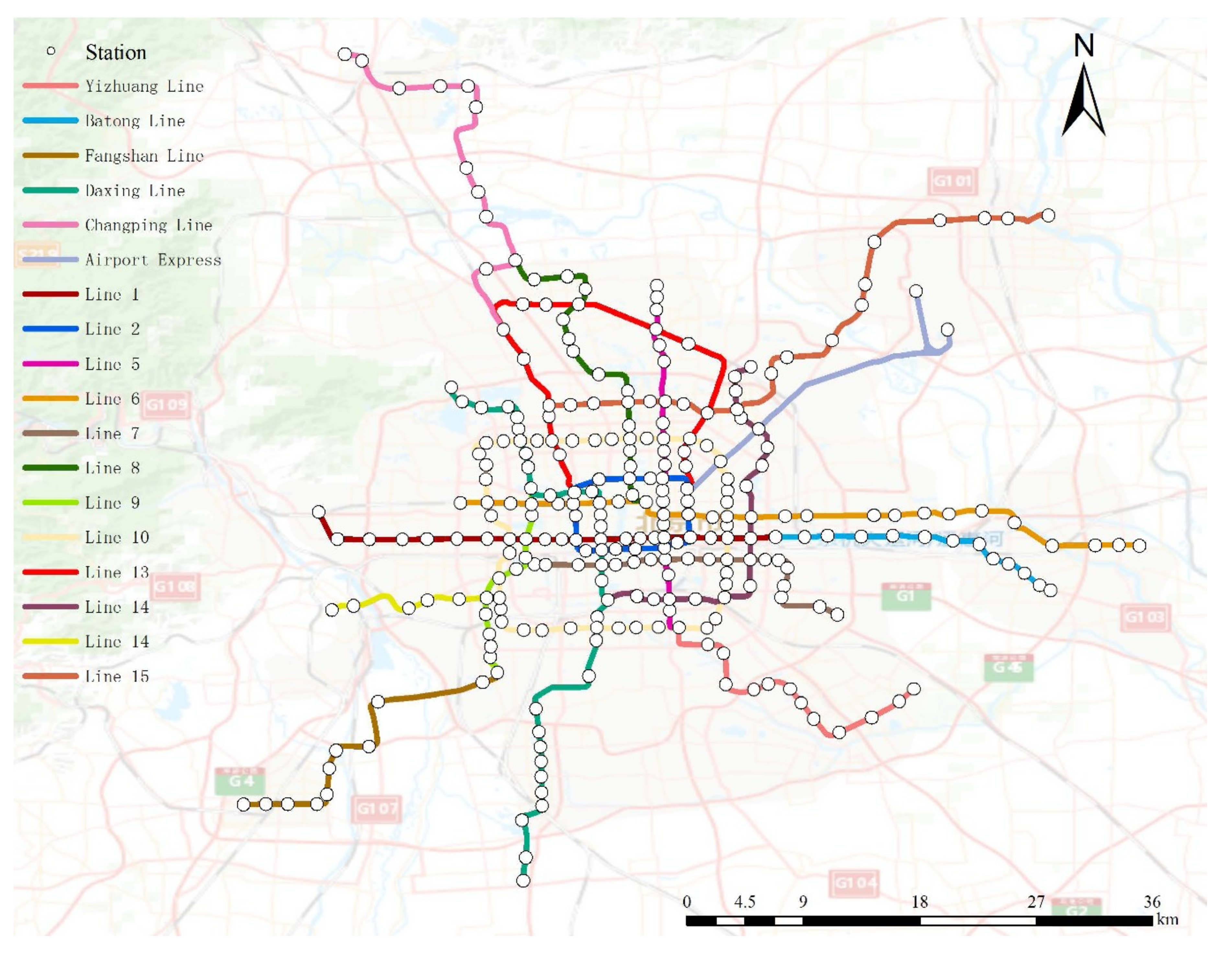
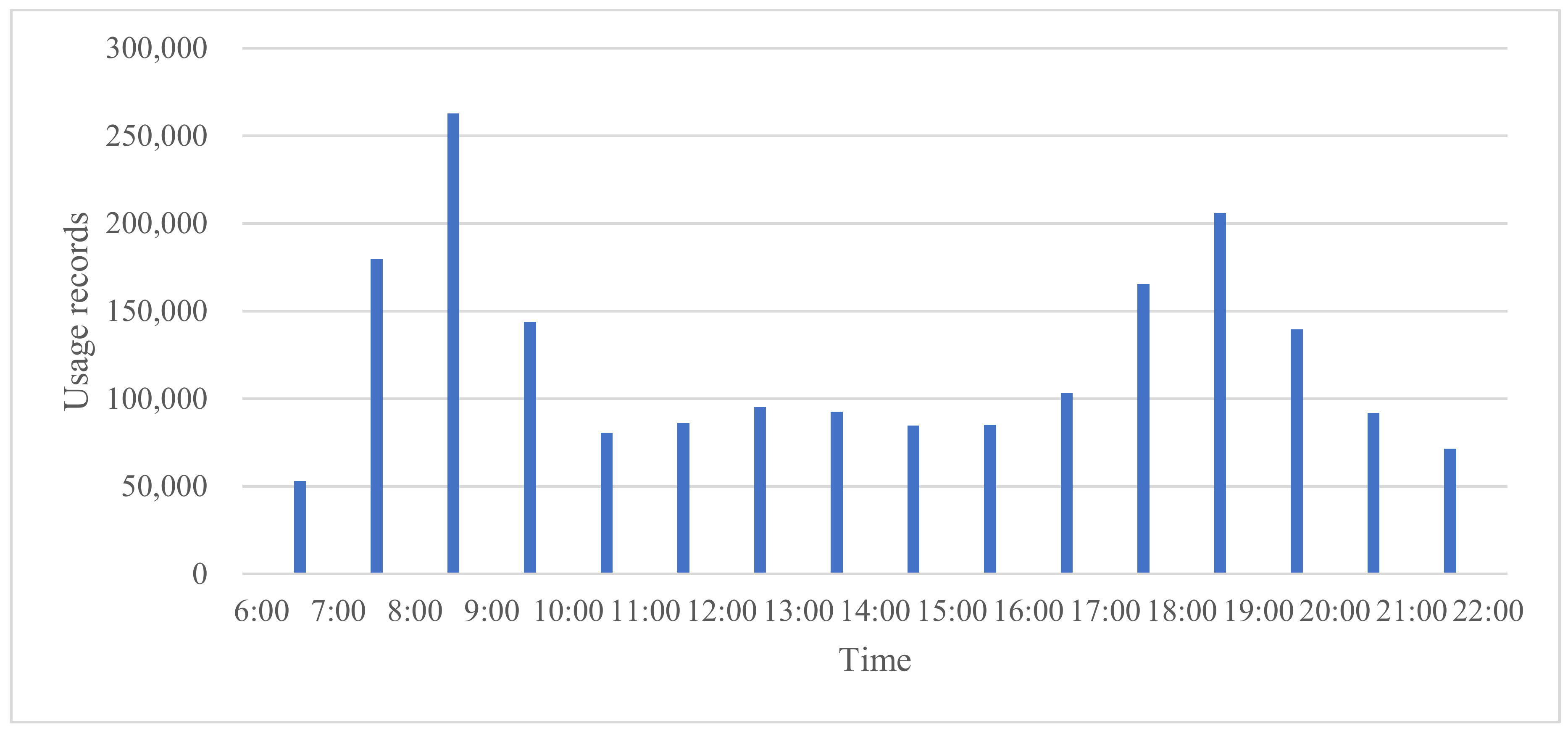
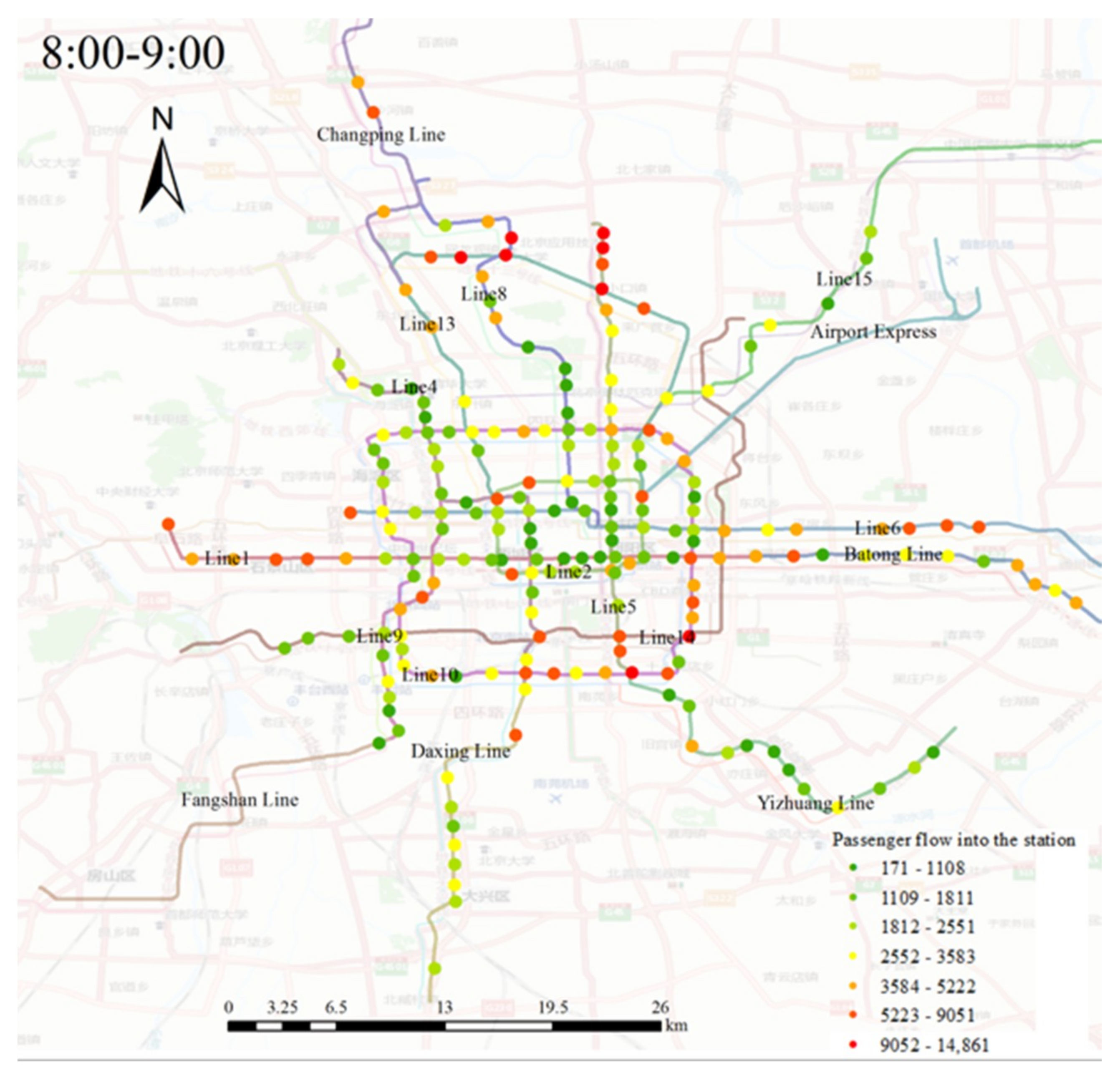
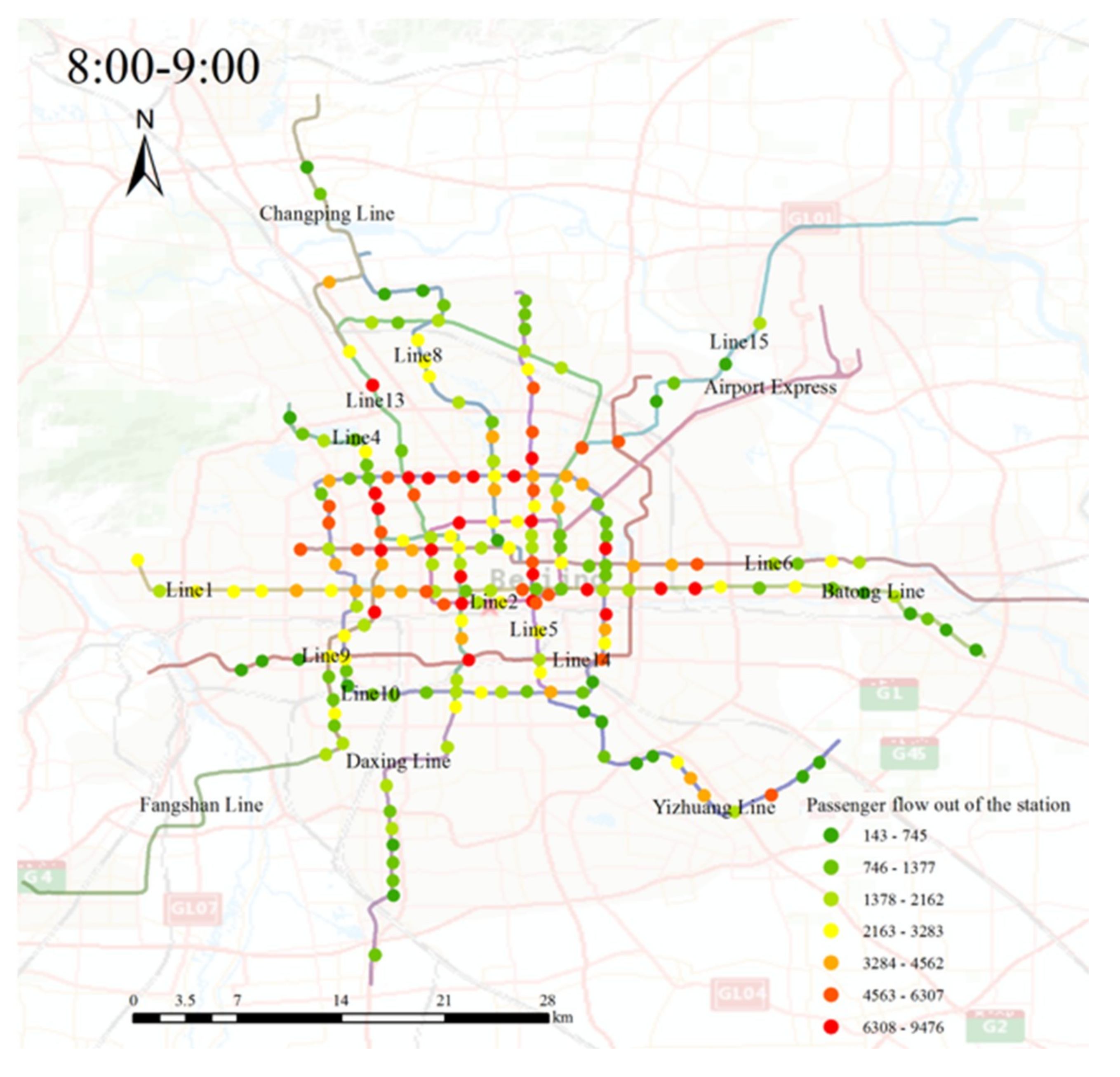
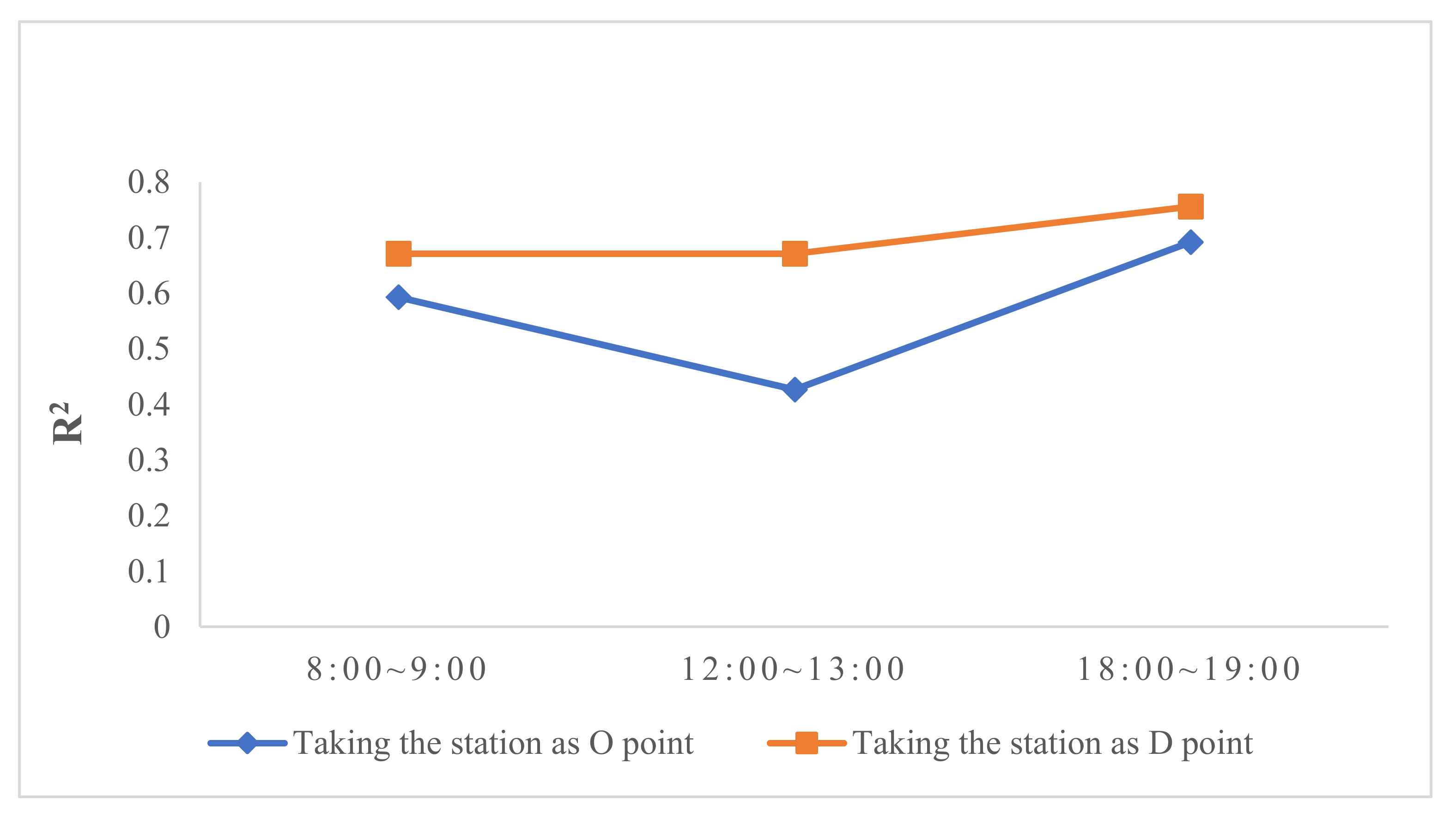
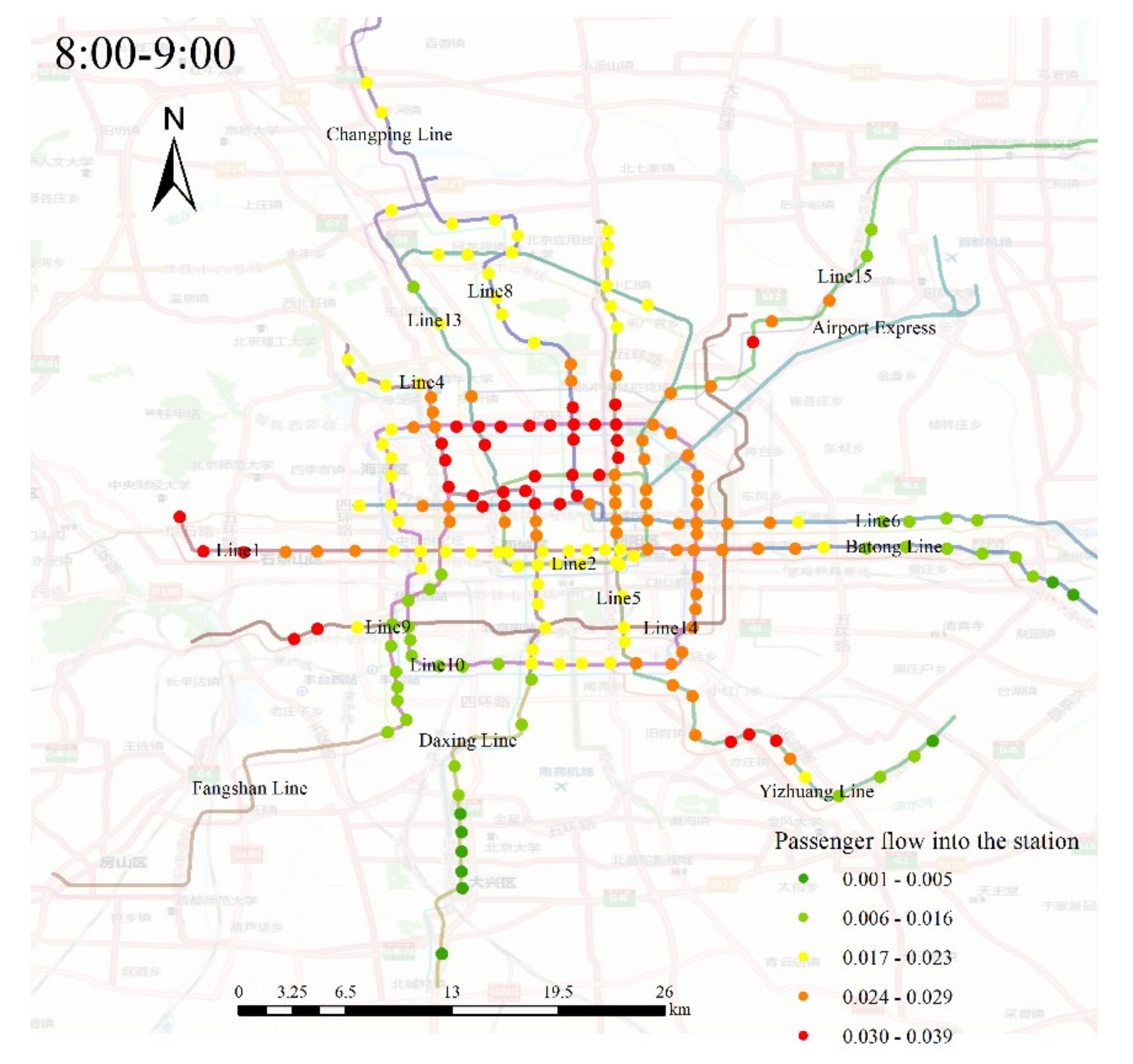
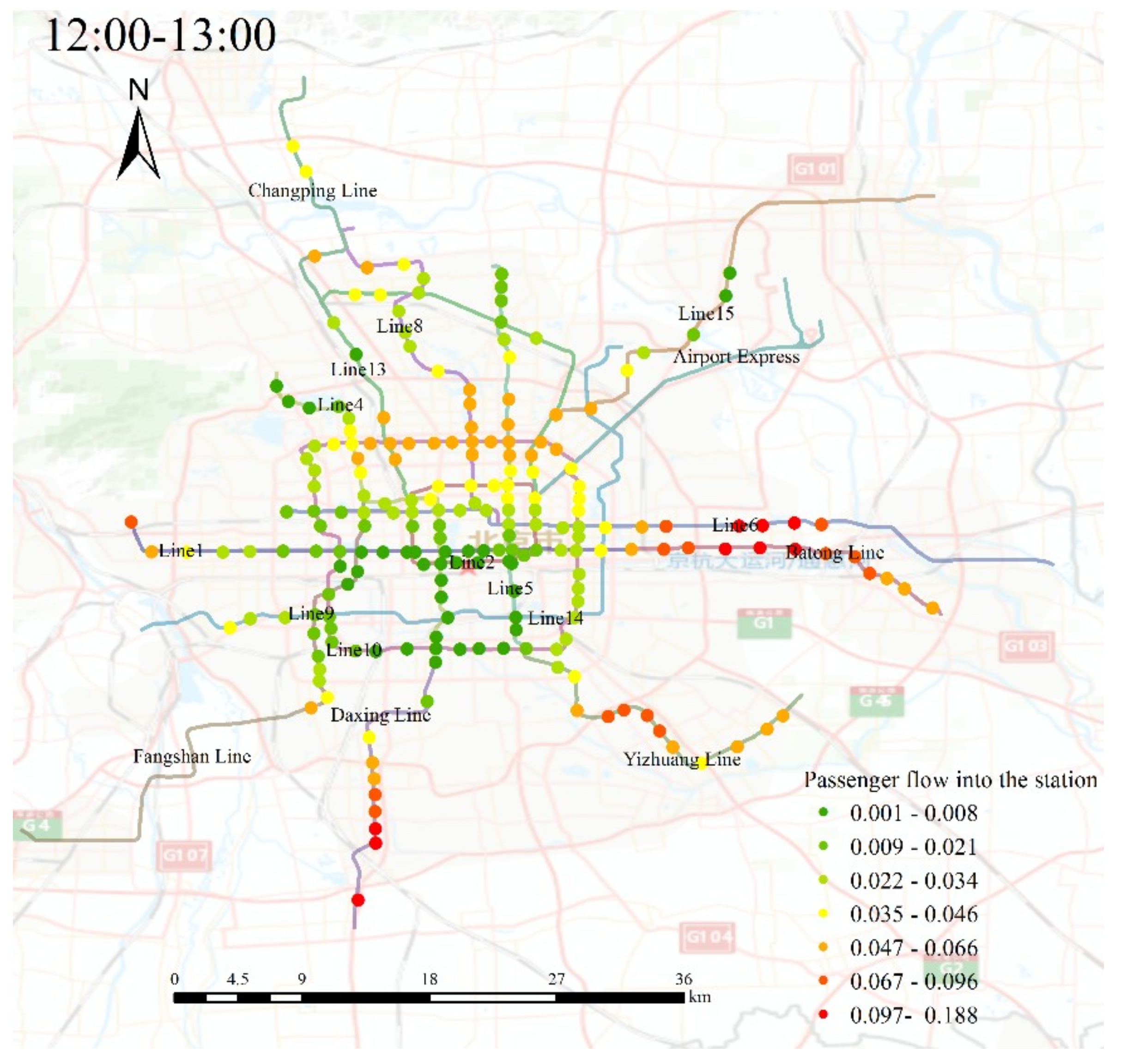
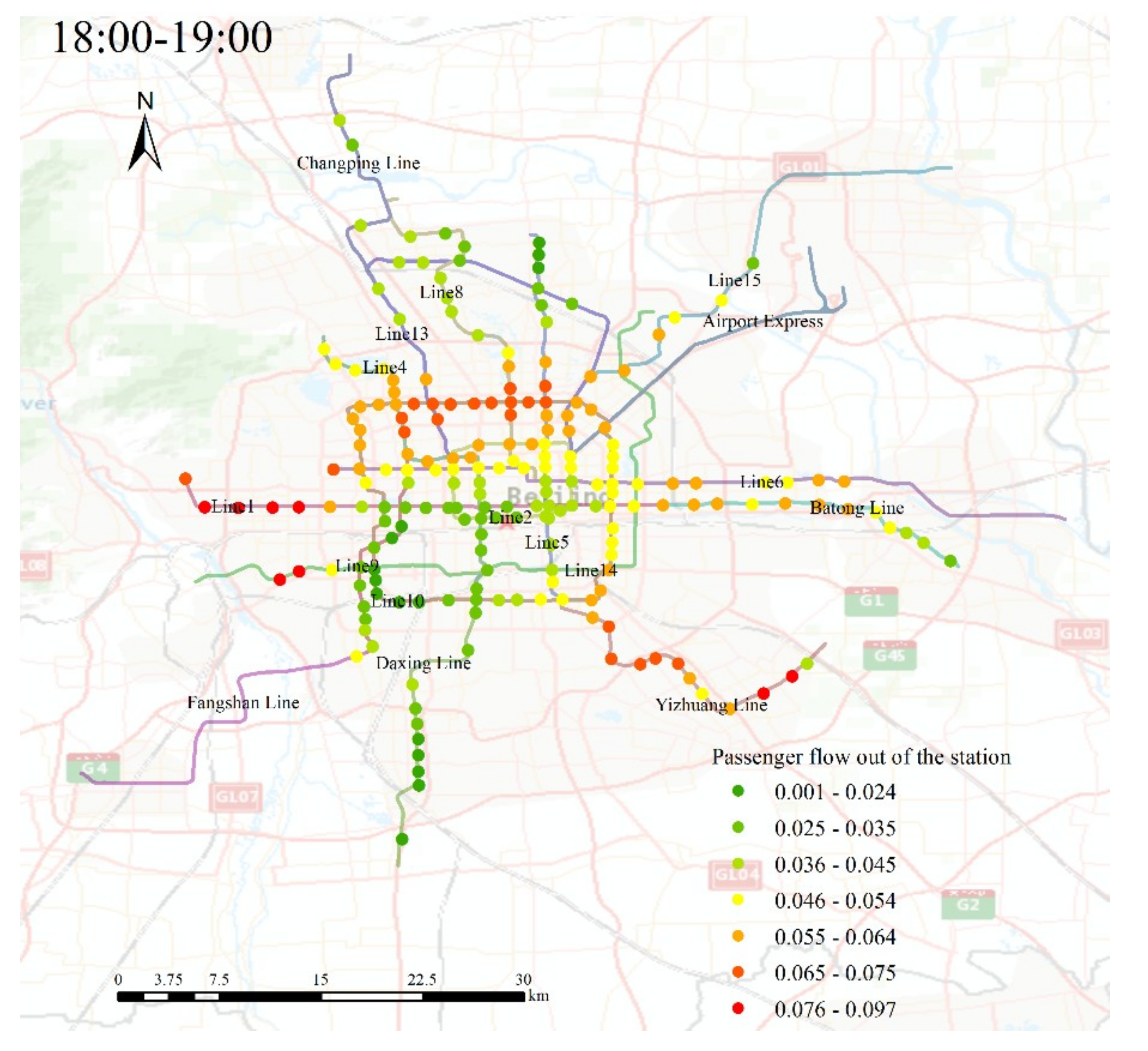
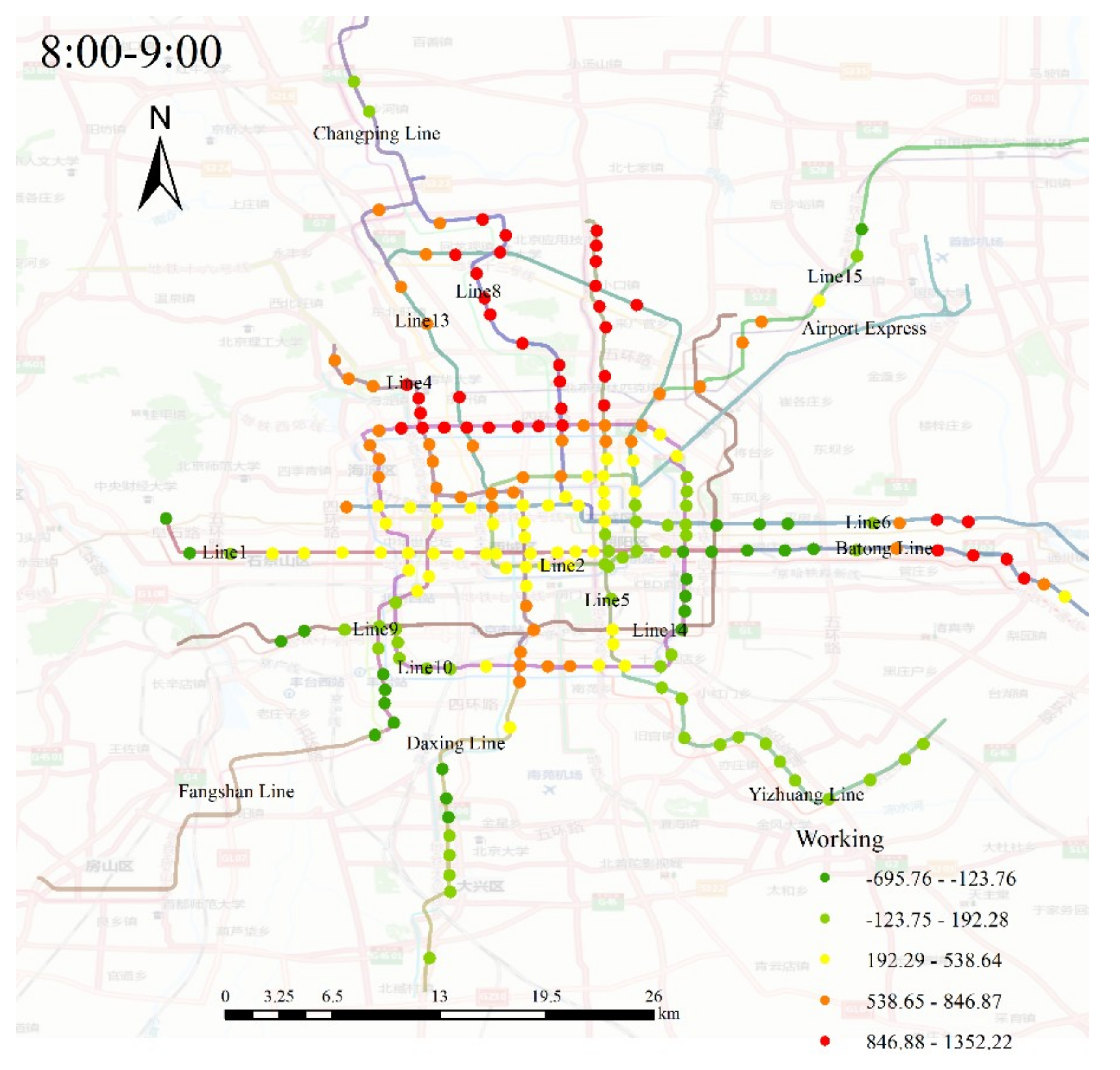
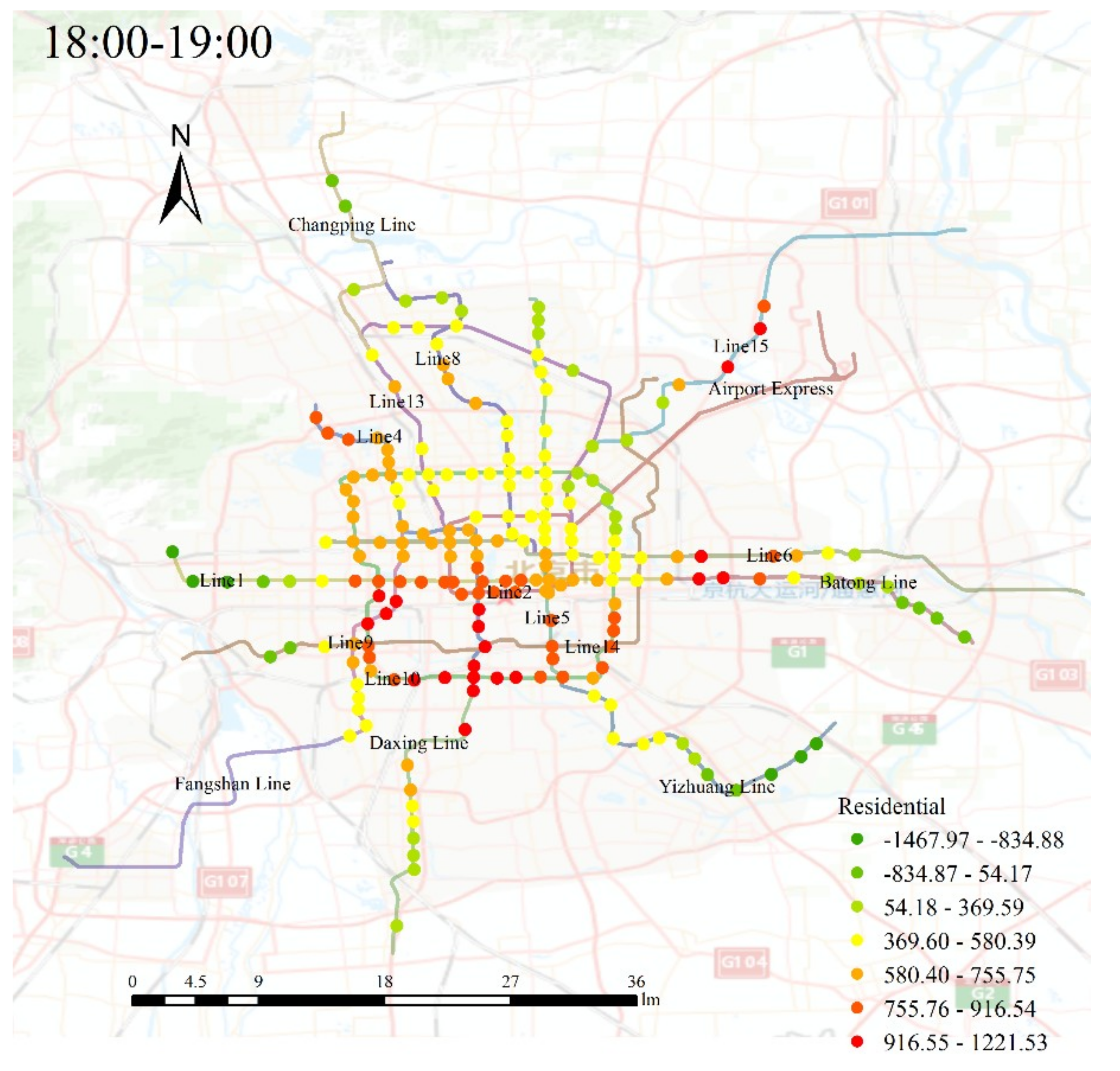
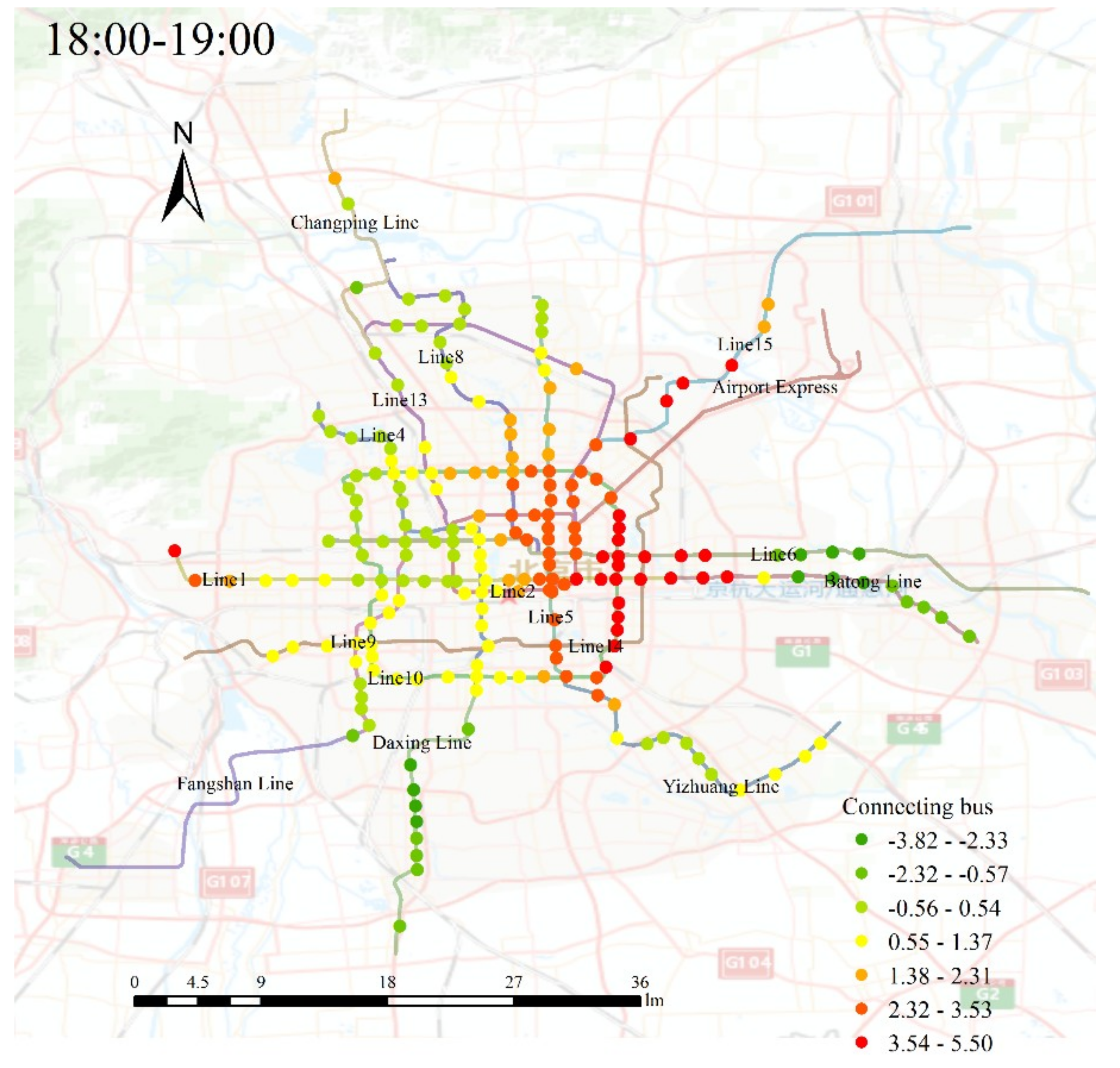
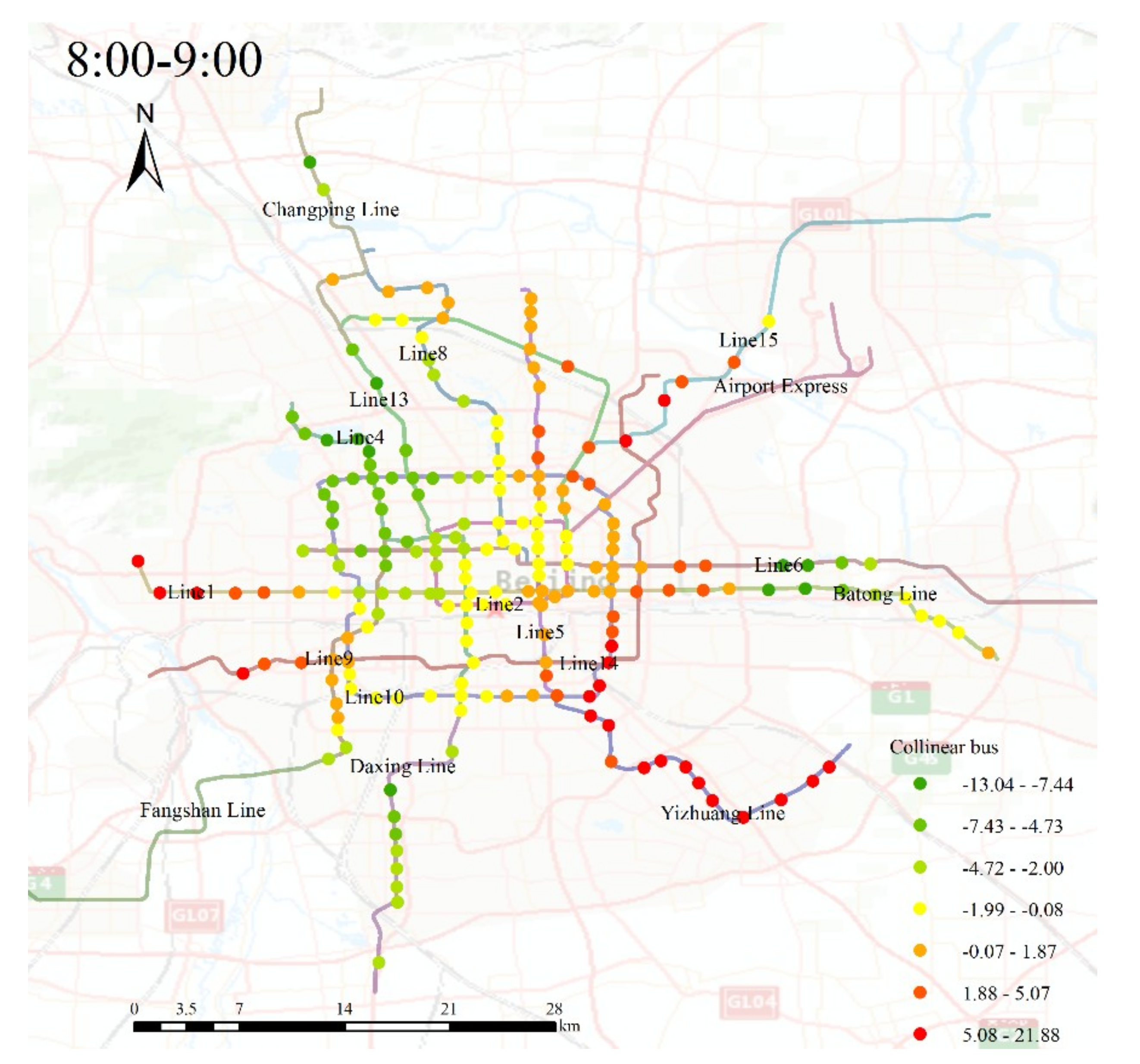
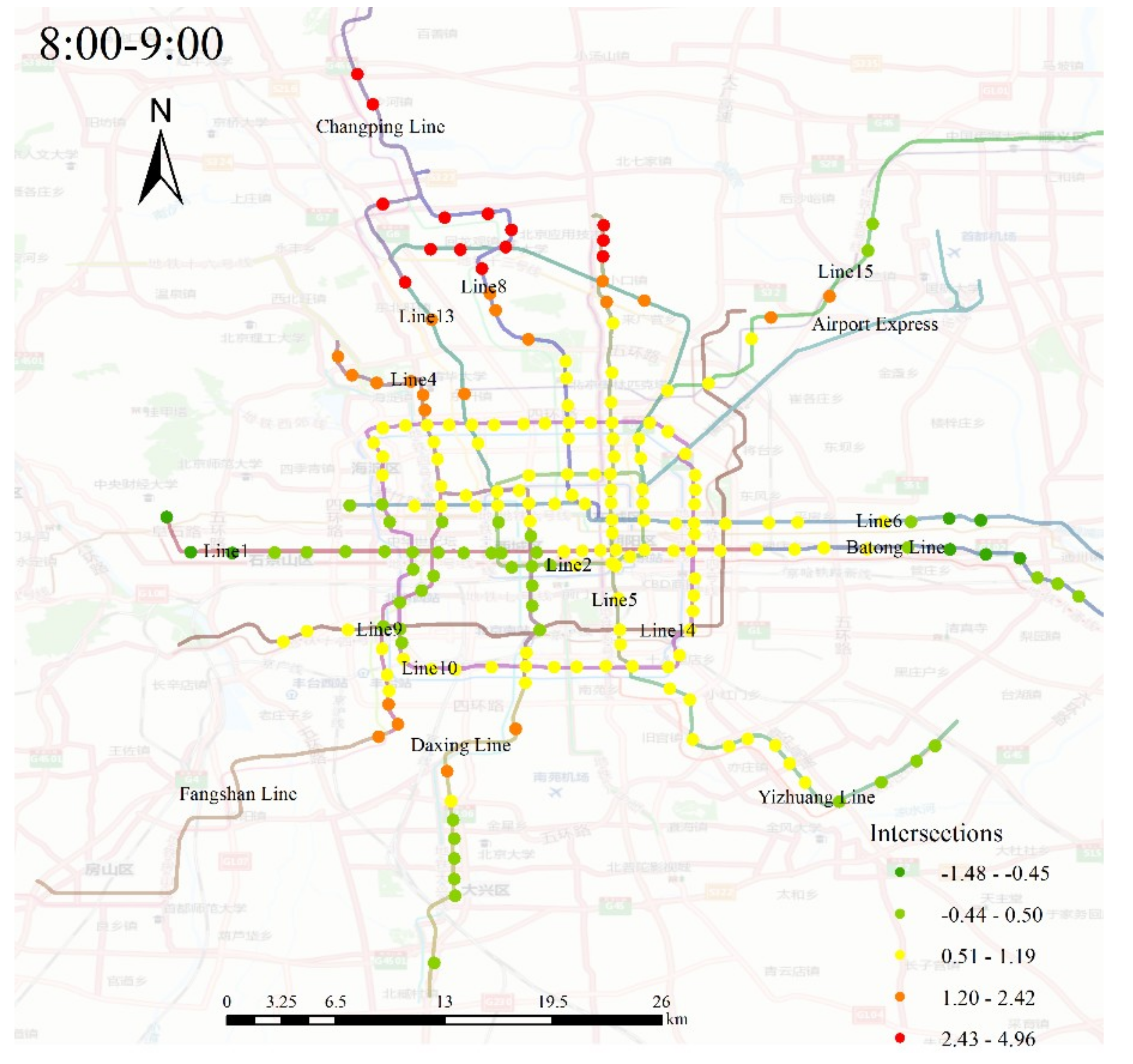
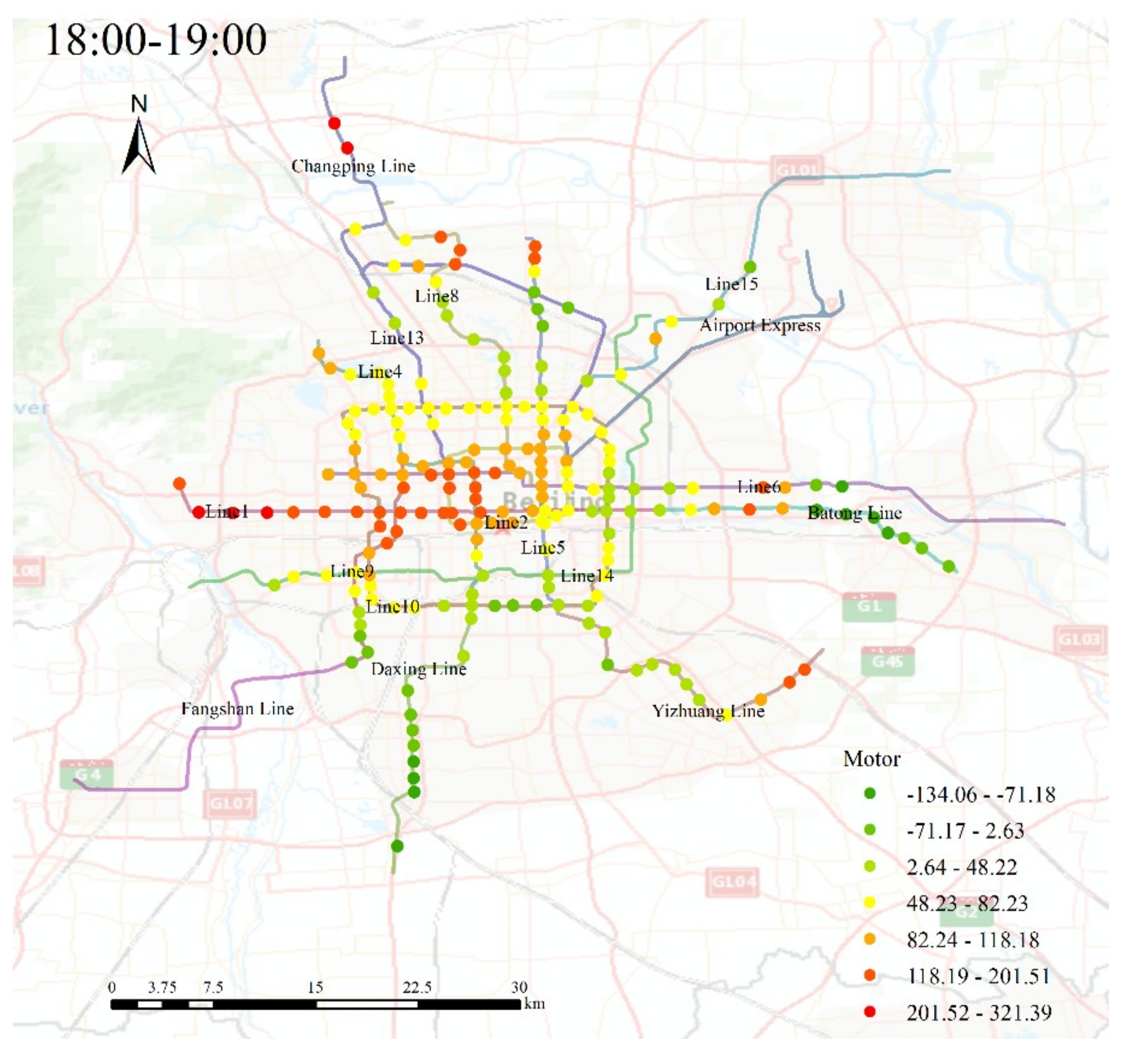
| Company Identity | Number of Records | Ratio (%) |
|---|---|---|
| Ofo | 900,419 | 39.62 |
| Mobike | 1,363,944 | 60.02 |
| 99bicycle | 1458 | 0.06 |
| Wisdom-Enjoyed Cycling | 6669 | 0.29 |
| Total | 2,272,490 | 1.00 |
| Variables | Definition | Min | Max | Mean | Standard Deviation | Data Sources |
|---|---|---|---|---|---|---|
| Child population density | Population density of ages 0–19 (thousands per km2) | 2.85 | 43.76 | 15.25 | 9.13 | The sixth national census from 2010. |
| Youth population density | Population density of ages 20–39 (thousands per km2) | 7.04 | 190.90 | 53.14 | 36.98 | |
| Middle-aged population density | Population density of ages 40–59 (thousands per km2) | 6.40 | 91.32 | 30.90 | 15.77 | |
| Aging population density | Population density of ages >=60 (thousands per km2) | 1.42 | 34.17 | 12.85 | 6.81 | |
| Residential land area | Residential land area (km2) | 0 | 0.31 | 0.080 | 0.056 | The second survey of land and resources from 2010. |
| Working land area | Business and office land area (km2) | 0 | 0.25 | 0.070 | 0.046 | |
| Recreational land area | Entertainment land area (km2) | 0 | 0.11 | 0.010 | 0.02 | |
| Connecting bus line | Number of feeder buses | 0 | 81.00 | 20.37 | 14.10 | Baidu map. |
| Collinear bus line | Number of joint buses with one or more same stations | 0 | 65.00 | 14.51 | 12.26 | |
| Non-motorized lane density | Line density of walking lanes (km per km2) | 0.19 | 3.84 | 1.32 | 0.52 | Open street map and government public data. |
| Motor-vehicle lane density | Line density of motor-vehicle roads (km per km2) | 0.16 | 2.91 | 0.93 | 0.41 | |
| Number of road intersections | Number of motor road intersections | 0 | 248.00 | 88.80 | 47.90 | |
| Number of vehicle parking spaces | Number of car parking spaces | 0 | 400.00 | 11.72 | 36.29 | |
| Number of shared bike racks | Number of shared bike racks | 0 | 524.00 | 69.09 | 91.38 |
| Child Population Density | Youth Population Density | Middle-Aged Population Density | Aging Population Density | Residential Land Area | Working Land Area | Recreational Land Area | Connecting Bus Line | Collinear Bus Line | Non-Motorized Lane Density | Motor-Vehicle Lane Density | Number of Road Intersections | Number of Vehicle Parking Spaces | Number of Shared Bike Racks | |
|---|---|---|---|---|---|---|---|---|---|---|---|---|---|---|
| Child population density | 1 | 0.960 ** | 0.896 ** | 0.722 ** | −0.154 * | −0.072 | −0.132 * | −0.073 | −0.075 | −0.046 | −0.211 ** | −0.083 | −0.126 | 0.036 |
| Youth population density | 1 | 0.889 ** | 0.695 ** | −0.156 * | −0.094 | −0.128 | −0.065 | −0.075 | −0.022 | −0.219 ** | −0.066 | −0.116 | −0.021 | |
| Middle-aged population density | 1 | 0.832 ** | −0.037 | −0.101 | −0.119 | −0.065 | −0.064 | −0.043 | −0.179 ** | −0.068 | −0.143 * | 0.040 | ||
| Aging population density | 1 | 0.045 | 0.024 | −0.005 | 0.088 | 0.057 | 0.089 | 0.052 | 0.165 * | −0.097 | −0.056 | |||
| Residential land area | 1 | 0.172 ** | −0.080 | 0.102 | 0.133 * | 0.362 ** | 0.131 * | 0.268 ** | −0.057 | 0.281 ** | ||||
| Working land area | 1 | 0.045 | 0.230 ** | 0.191 ** | 0.213 ** | 0.228 ** | 0.330 ** | −0.068 | 0.023 | |||||
| Recreational land area | 1 | 0.095 | 0.094 | −0.026 | −0.013 | 0.079 | −0.061 | −0.025 | ||||||
| Connecting bus line | 1 | 0.527 ** | 0.291 ** | 0.540 ** | 0.406 ** | 0.139 * | 0.284 ** | |||||||
| Collinear bus line | 1 | 0.292 ** | 0.419 ** | 0.352 ** | 0.170 ** | 0.343 ** | ||||||||
| Non-motorized lane density | 1 | 0.532 ** | 0.775 ** | 0.349 ** | 0.229 ** | |||||||||
| Motor-vehicle lane density | 1 | 0.565 ** | 0.254 ** | 0.153 * | ||||||||||
| Number of road intersections | 1 | 0.277 ** | 0.126 | |||||||||||
| Number of vehicle parking spaces | 1 | −0.005 | ||||||||||||
| Number of shared bike racks | 1 |
| Variables | Moran’s I | Z-Score | Pattern Moran’s I Test |
|---|---|---|---|
| Child population density | 0.593 ** | 21.21 | Clustered |
| Youth population density | 0.559 ** | 20.10 | Clustered |
| Middle-aged population density | 0.529 ** | 18.96 | Clustered |
| Aging population density | 0.446 ** | 15.91 | Clustered |
| Residential land area | 0.442 ** | 15.88 | Clustered |
| Working land area | 0.311 ** | 11.18 | Clustered |
| Recreational land area | 0.250 ** | 9.23 | Clustered |
| Connecting bus line | 0.225 ** | 8.16 | Clustered |
| Collinear bus line | 0.407 ** | 14.61 | Clustered |
| Non-motorized lane density | 0.221 ** | 8.03 | Clustered |
| Motor-vehicle lane density | 0.401 ** | 14.40 | Clustered |
| Number of road intersections | 0.390 ** | 13.93 | Clustered |
| Number of vehicle parking spaces | 0.031 | 1.52 | Random |
| Number of shared bike racks | 0.038 | 1.56 | Random |
| Type | Variables |
|---|---|
| Independent variable | Passenger flow in and out of rail transit stations |
| Working land area | |
| Residential land area | |
| Connecting bus lines | |
| Collinear bus lines | |
| Motor-vehicle lane density | |
| Number of road intersections | |
| Dependent variable | Bike-sharing usage records in a 500 m range around rail transit stations |
| Period | The Maximum of the Condition Number | |
|---|---|---|
| Station as O Point | Station as D Point | |
| 8:00~9:00 | 16.3 | 26.0 |
| 12:00~13:00 | 23.2 | 25.0 |
| 18:00~19:00 | 25.6 | 25.3 |
© 2020 by the authors. Licensee MDPI, Basel, Switzerland. This article is an open access article distributed under the terms and conditions of the Creative Commons Attribution (CC BY) license (http://creativecommons.org/licenses/by/4.0/).
Share and Cite
Wang, Z.; Cheng, L.; Li, Y.; Li, Z. Spatiotemporal Characteristics of Bike-Sharing Usage around Rail Transit Stations: Evidence from Beijing, China. Sustainability 2020, 12, 1299. https://doi.org/10.3390/su12041299
Wang Z, Cheng L, Li Y, Li Z. Spatiotemporal Characteristics of Bike-Sharing Usage around Rail Transit Stations: Evidence from Beijing, China. Sustainability. 2020; 12(4):1299. https://doi.org/10.3390/su12041299
Chicago/Turabian StyleWang, Zijia, Lei Cheng, Yongxing Li, and Zhiqiang Li. 2020. "Spatiotemporal Characteristics of Bike-Sharing Usage around Rail Transit Stations: Evidence from Beijing, China" Sustainability 12, no. 4: 1299. https://doi.org/10.3390/su12041299
APA StyleWang, Z., Cheng, L., Li, Y., & Li, Z. (2020). Spatiotemporal Characteristics of Bike-Sharing Usage around Rail Transit Stations: Evidence from Beijing, China. Sustainability, 12(4), 1299. https://doi.org/10.3390/su12041299





